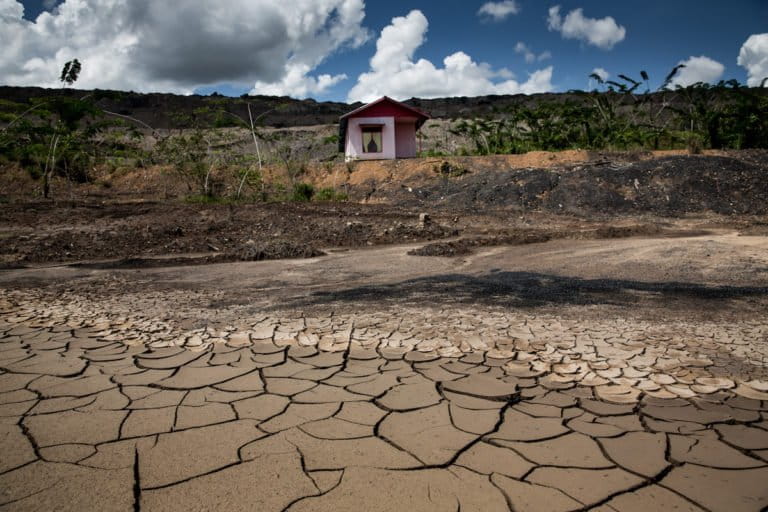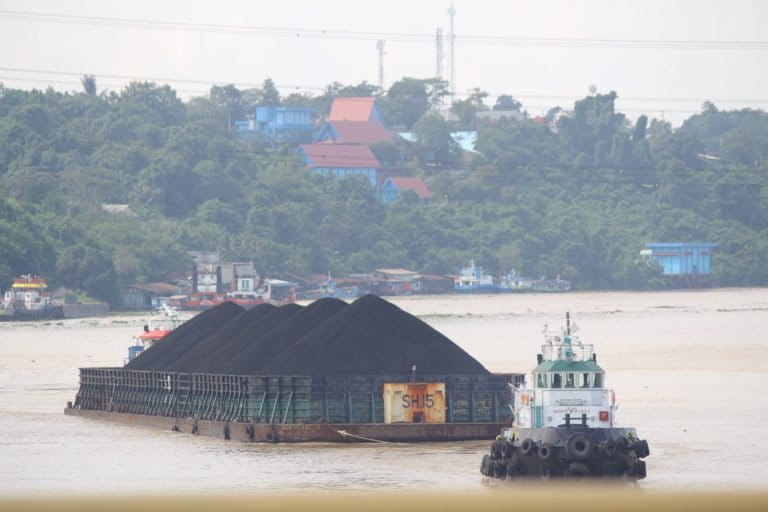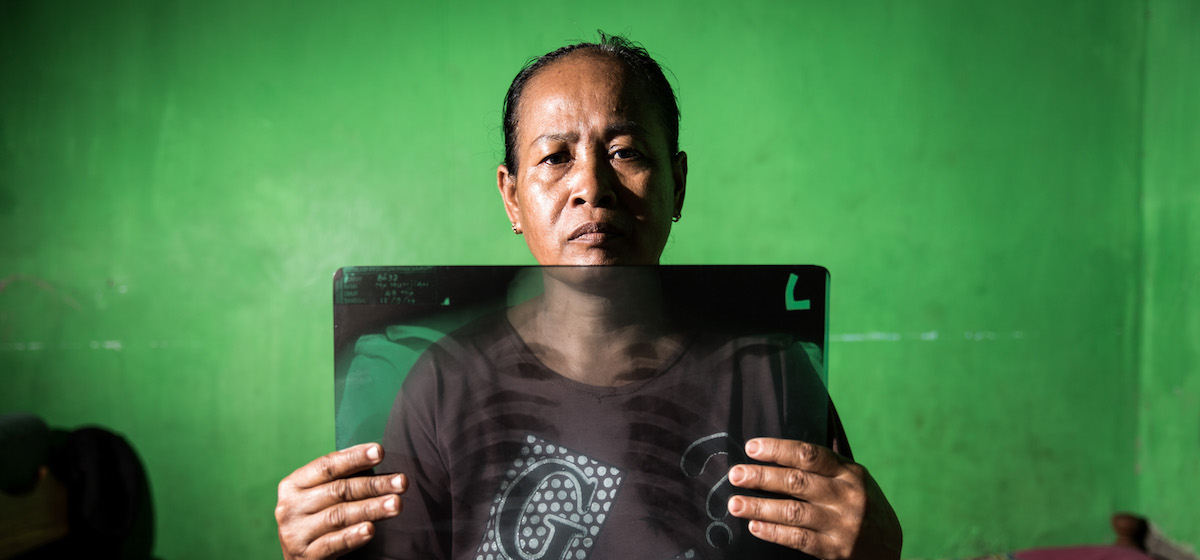- Since 2000, Indonesia has transformed from a bit player in the global coal industry to a leading exporter and consumer of the fuel.
- While much of the world is shifting away from coal due to its contribution to global warming and water and air pollution, Indonesia’s government is taking steps that further entrench the country’s production and consumption of coal, and that make it difficult for alternative energy sources to gain a foothold.
- Proponents of coal in Indonesia’s government, including politicians who own shares in coal companies, point to the role coal plays in Indonesia’s economy and in promoting energy independence.
In a little more than 20 years, Indonesia has gone from being a minor player in the global coal industry to playing a central role as a key consumer and producer of coal. And even as investors and key export markets are shifting toward alternative energy sources, Indonesia’s laws are increasingly tying future economic growth to the fossil fuel.
“Indonesia remains one of the biggest challenges for people who would like to shift the world’s dependence on coal,” said Isabella Suarez, Southeast Asia analyst at the Centre for Research on Energy and Clean Air, a research organization. “The incentives to keep dirty coal cheap are in place, and that’s likely not going to change soon, unfortunately.”
Since 2010, Indonesia has opened 22.7 gigawatts (GW) of coal-fired power capacity, third in the world behind India and China. That means coal now accounts for nearly 60% of the country’s electricity generation, a figure that has risen steadily since 2010.
Production has also grown dramatically, from just 67 million tons (mt) in 2000, to 325 mt in 2010, and 616 mt in 2019, making Indonesia the world’s biggest thermal coal exporter and 12th-largest consumer of coal. And if the industry has its way, there’s more to come. According to a report from Global Energy Monitor, Indonesia accounts for more than 75% of planned coal power construction in all of South and Southeast Asia, part of a plan to increase overall domestic consumption of coal to 30 or 40% of all production.
This upswing continues despite the impacts of the COVID-19 pandemic, which led to coal demand plummeting in early 2020 as electricity generation dropped across Asia. Indonesia saw domestic consumption fall 14 million tons short of projections, and the benchmark export coal price drop to a five-year low, leading to miners cutting 50 million tons of capacity. Across the region, 2020 saw coal-fired power plant plans canceled in Vietnam, India, the Philippines and Bangladesh.
Indonesia has resisted the trend. Instead of addressing coal overcapacity and cost issues, or looking at tackling the structural issues that have prevented clean energy from expanding across the archipelago, the government has passed legislation that expands the coal industry’s control over mining permits and incentivizes downstream industrial use of coal while weakening environmental and social safeguards.

Entrenching coal
Since 2000, the rapid rise in coal mining and burning has had a devastating impact on Indonesia’s environment and public health. Lack of environmental oversight has led to widespread allegations of water pollution and degraded landscapes in the country’s main coal-mining regions of Borneo and Sumatra, and the boom in burning coal for electricity plays a key role in increased air pollution concerns around the capital, Jakarta.
Proponents of coal in Indonesia’s government argue that relying on a domestic resource like coal benefits Indonesia’s economy and promotes energy independence. For example, the push to expand downstream uses like coal gasification is partly meant to reduce imports of natural gas.
The coal industry also has more direct benefits for many in the political class. The list of politicians and well-connected elites with links to coal is long. Former presidential candidates Aburizal Bakrie and Prabowo Subianto have significant stakes in coal, as do numerous members of parliament and even ministers in President Joko “Jokowi” Widodo’s cabinet, such as Coordinating Minister for Maritime Affairs Luhut Pandjaitan.
In September 2020, parliament swiftly passed an industry-supported mineral and mining law, which, according to the NGO Mining Advocacy Network (Jatam), facilitates business while ignoring environmental and social concerns.
And while many in Indonesia’s government argue in support of coal as a domestic resource, there is a risk that by becoming overdependent on fossil fuels, the potential for renewables to play a role in achieving energy independence is being neglected, especially as more global financial institutions focus on clean energy investments.
Government support for coal also protects the industry from domestic competition. Providing subsidies to downstream investment for coal means the playing field is not level. During a public event in February 2021, Dadan Kusdiana, the director-general of renewable energy under the Ministry of Energy and Mineral Resources, said the ability of state-owned electricity utility PLN to take up renewable energy was slim due to coal lock-in.
“Given how much control the government has over the sector, coal has been kept very cheap domestically,” Suarez said. “This is a challenge for the entry of renewable energy, aside from the fact that there are not many incentives to bring in international investment.”
Corruption is also a major issue linked to Indonesia’s coal industry, and a key reason why mining wealth has not benefited local communities.
“The areas that produce natural resources, such as Papua, Aceh, many parts of Indonesian Borneo, and Southeast Sulawesi, are among the poorest and most underdeveloped parts of the country,” said Laode M. Syarif, executive director of Kemitraan, an Indonesian NGO focused on good governance, and a former anti-corruption official. “All that is left for the local people after resource exploitation has come to an end are denuded forests and gaping mine pits.”
The 2018 arrest of the PLN director over corruption allegations connected to the Riau-1 coal-fired power plant led to increased hope that Indonesia’s Corruption Eradication Commission (KPK) would begin to focus more on the natural resources sector. But amendments passed by parliament in September 2019 weakened the agency — an institution that is often ranked among the most popular by the Indonesian public — and have limited its ability to investigate the coal industry.

The global picture
Support for Indonesia’s coal-building spree also comes from abroad, particularly from three countries: South Korea, China and Japan account for $25 billion in financing for 17.4 GW of coal-fired capacity, according to the Global Coal Public Finance Tracker. These countries also provide technology for coal-fired power plants.
That might be changing. Late last year, major public and private financial institutions in Japan and South Korea announced plans to gradually reduce coal investment, followed by Malaysia’s CIMB. While this doesn’t impact plants under construction, it could impact future expansion plans — something worth watching in 2021.
“Even though they have these commitments, there are still loopholes,” said Elrika Hamdi, an Indonesian energy finance analyst at the Institute for Energy Economics and Financial Analysis (IEEFA), a U.S.-based think tank. She said the immediate impact would be on smaller plants planned outside of Java and Sumatra, pointing to recent cancellations of some plants of less than 100 megawatt (MW), which are only a small part of the country’s coal pipeline.
Suarez said to look out for how financing for the next round of large-scale facilities goes to truly gauge the impact.
“Will be watching to see how many plants move on as scheduled,” she said, pointing to the plants under consideration in Banten province, outside Jakarta. China, which has invested $5.5 billion to help build more than 7 GW of coal plants in Indonesia, hasn’t yet announced any shifts, but is worth watching as rhetoric around greening the Belt and Road Initiative gains more attention.
However, a global decline in demand for coal could, paradoxically, further entrench coal burning in Indonesia, as lawmakers seek to give coal producers access to reliable domestic demand in case exports peak or fall.
“When Japan, Korea, and Taiwan structurally move away from coal, Indonesia won’t have very many other options,” said Ghee Peh, an energy finance analyst at IEEFA. “You don’t have a growing new customer like you did 10 years ago with China.”
For now, coal prices have rebounded, exports to China are again recovering, and the industry is optimistic about 2021. But China’s imports are a temporary surge connected to a trade dispute with Australia, and may not be sustainable.
“Indonesia is at the forefront of the China-Australia spat … at this point of time at least the rest of the year, Indonesia will have great business,” Peh said. “But eventually Australia will have to back down, and suddenly the extra 20 million tonnes of demand Indonesia thought it had will be gone.”

For Indonesia’s coal industry, 2021 has started as a year of unbridled optimism. Prices are rising, exports are recovering, and there is less risk of corruption investigations, or even competition from clean energy. In fact, coal might even be considered a clean energy under proposed regulations, including an effort by PLN to expand coal-firing with biomass.
“We think that the Indonesia government is trying to greenwash the coal sector,” said Putra Adhiguna, an Indonesia energy analyst at IEEFA. “Mixing a bit of biomass into coal power generation is a way for the government to postpone big decisions about renewables.”
A year ago, there was hope that the pandemic could shake up the coal industry’s grasp on the Indonesian economy. Instead, it has gained even more power, and put the country’s clean energy hopes on hold. Unless something changes, Indonesia will soon take its place as the leading supporter of an industry that few want to invest in, and is increasingly being seen as a risky bet for the climate, the environment, and the economy, too.
FEEDBACK: Use this form to send a message to the author of this post. If you want to post a public comment, you can do that at the bottom of the page.
